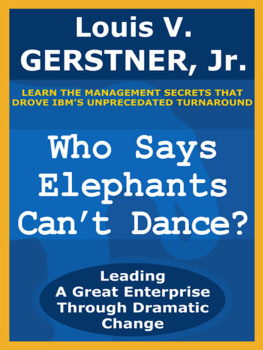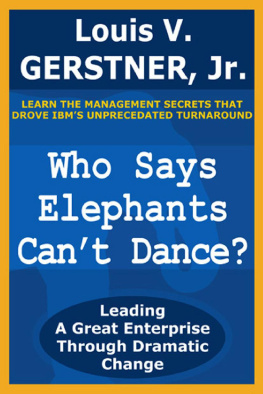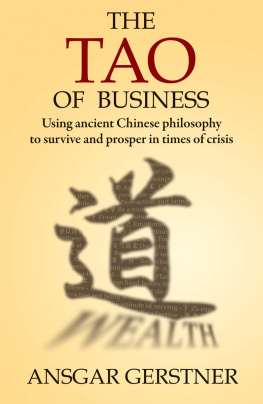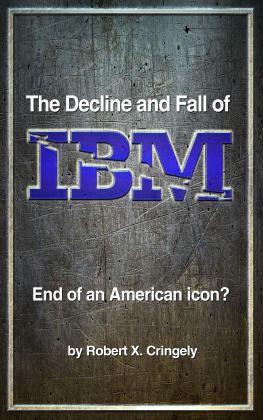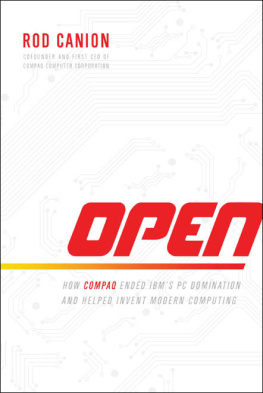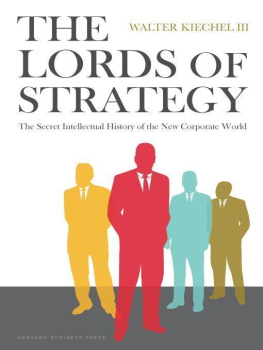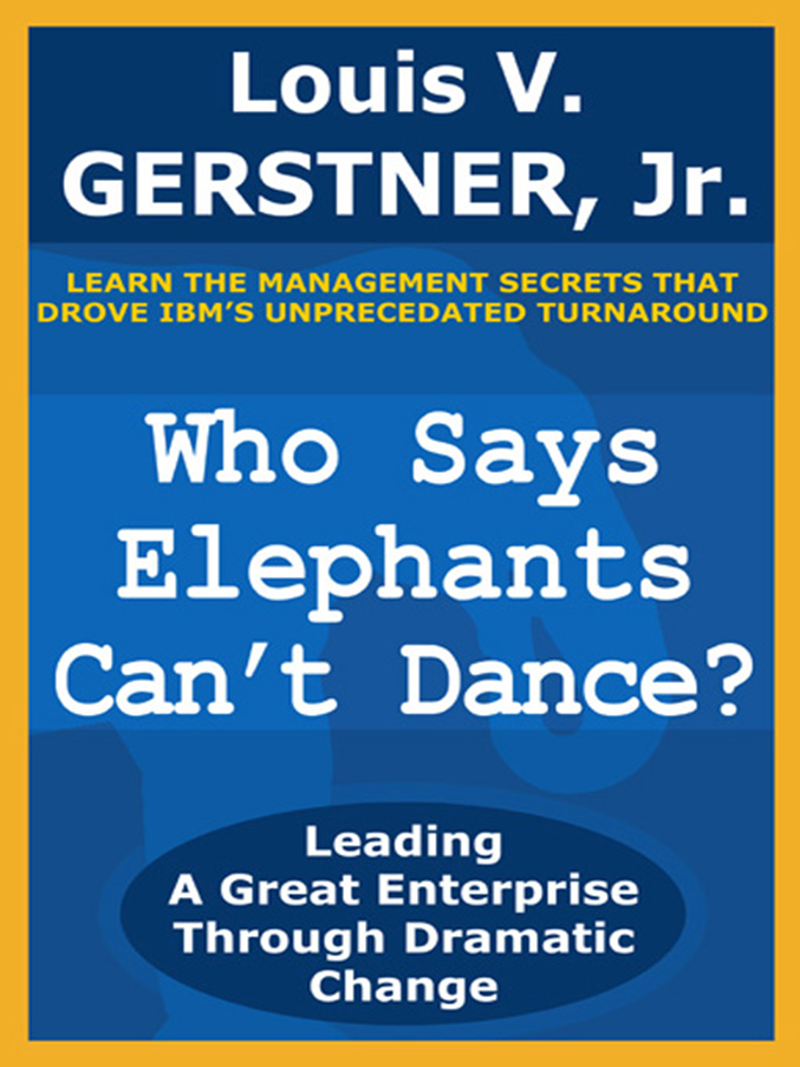I have never said to myself, Gee, I think I want to write a book. I am not a book writer. Until now I havent had the time or the inclination to lean back and reflect on my thirty-five years in business. I havent had the patience it takes to sit down for a long time and create a book. Throughout my business life I have been wary of telling others how to manage their enterprises based on my personal experiences.
And, frankly, I wasnt sure if anyone would be interested in reading my thoughts. I read a lot of books, but not many about business. After a twelve-hour day at the office, who would want to go home and read about someone elses career at the office?
I have always believed you cannot run a successful enterprise from behind a desk. Thats why, during my nine years as Chief Executive Officer of International Business Machines Corporation, I have flown more than I million miles and met with untold thousands of IBM customers, business partners, and employees. Over the past two years, after people began speculating that my retirement might be just around the corner, I thought Id get a lot of big-picture questions that outgoing CEO s get about the economy, the world, and the future. Instead, I have been surprised by how many timesat big meetings and small ones, and even at private sessions with CEO s and heads of stateI was asked: How did you save IBM ? What was it like when you got there? What were the problems? What specific things did you do to bring the company back to life? What did you learn from the experience?
They wanted to know, many of them said, because their own companies, organizations, or governments faced some of the same issues IBM had encountered during its very, very public near collapse in the early 1990s. Businesspeople outside the United States, confronted with the need to transform tradition-bound enterprises into tough and nimble players in a world economy, seemed particularly interested in the subject.
More recently, after I had announced my intention to retire, I was amused to read an editorial in an American newspaper, USA Today , that said, in effect, it hoped Gerstner was going to do something more useful than write a book and play golf. Nice thought, but since the announcement, I got thousands of letters and e-mails, and the most frequent sentiment was, again, that I should tell what I had learned from my tenure at IBM . (I was also invited to appear in a TV commercial with golf pros Jack Nicklaus and Gary Player.) You might say that I concluded, a little reluctantly, that the easiest way for me to fulfill all this popular demand was to write a book and to hold off on serious golf for the time being.
So, here I am, ready to tell you the story of the revival of IBM .
Of course, this book would never have appeared without the heroes among my IBM colleagues who helped me restore IBM to a position of leadership. In many respects this is their book as much as it is mine. There were many such leaders, but clearly among the most important were Dennie Welsh and Sam Palmisano, who built our services company; John Thompson, who created our Software Group; Abby Kohnstamm, who took a cacophony of confused messages and melded them into one of the most powerful brand statements in the world; Nick Donofrio, who was my translator from the world of high tech to the world of management; Jerry York, Rick Thoman, and John Joyce, three great financial executives who instilled a level of productivity, discipline, and probing analysis into a company that appeared to value these quite lightly when I arrived; Larry Ricciardi, my colleague of many years, who brought his intellect and counsel to many of our critical decisions; and, finally, Tom Bouchard, who as head of Human Resources stood tall and took the heat as we transformed the IBM culture.
There are many more. In fact, there are thousands of IBM ers who answered the call, put their shoulders to the wheel, and performed magnificently as we undertook an exhaustingat times frightening, but always exhilaratingjourney to restore this extraordinary company. To all of them, I dedicate this book.
I wrote this book without the aid of a coauthor or a ghostwriter (which is why its a good bet this is going to be my last book; I had no idea it would be so hard to do). I am responsible for any mistakes or confusion the reader may endure. The views expressed are mine and are not necessarily those of the IBM Corporation or any other IBM er.
I did have a great deal of help from some longtime IBM colleagues. They include Jon Iwata, Mark Harris, and Mike Wing, who made substantial contributions. Michele Andrle managed production of every draft and redraft deftly and patientlyan unbelievable amount of stitching and restitching. I want to thank them and everyone else who helped me.
T his is not my autobiography. I cant think of anyone other than my children who might want to read that book (and Im not 100 percent sure they would, either). However, in the spirit of trying to provide some contextual background for my views, what follows is a brief historical perspective.
I was born on March 1, 1942, in Mineola, New Yorkthe county seat of Nassau County, Long Island.
My father started work as a milk-truck driver and ultimately became a dispatcher at the F&M Schaeffer Brewing Company. My mother was a secretary, sold real estate, and eventually became an administrator at a community college. Along with three brothersone older, two youngerI lived in the same house in Mineola until I left for college, in 1959.
We were a warm, tightly knit, Catholic, middle-class family. Whatever I have done well in life has been a result of my parents influence. My father was a very private man with a great love of learning and inner strength that needed no approbation or reinforcement from broader audiences. My mother was enormously disciplined, hard-working, and ambitious for all her children. She drove us toward excellence, accomplishment, and success.
Education was a high priority in the Gerstner household. My parents remortgaged their house every four years to pay for schooling. I attended public grade school, then Chaminade, a Catholic high school in Mineola. I graduated in 1959 and was almost on my way to Notre Dame when Dartmouth College offered me a substantial scholarship. It was a major benefit for our family finances, so I packed off for Dartmouth in September 1959, without ever having set foot on its campus.
Four years later I graduated with a degree in engineering science. I immediately went to Harvard Business School for two years. (Back then one could leave undergraduate school and go directly to business school, a practice that has since, for the most part, been abandoned by business schools.)
Then, at the tender age of 23, I emerged from Harvard and went into business.
I joined the management consulting firm of McKinsey & Company in New York City in June 1965. My first assignment was to conduct an executive compensation study for the Socony Mobil Oil Co. Ill never forget my first day on that project. I knew nothing about executive compensation, and absolutely nothing about the oil industry. Thank goodness I was the low man on the totem pole, but in the McKinsey world one was expected to get up to speed in a hurry. Within days I was out meeting with senior executives decades older than I was.

